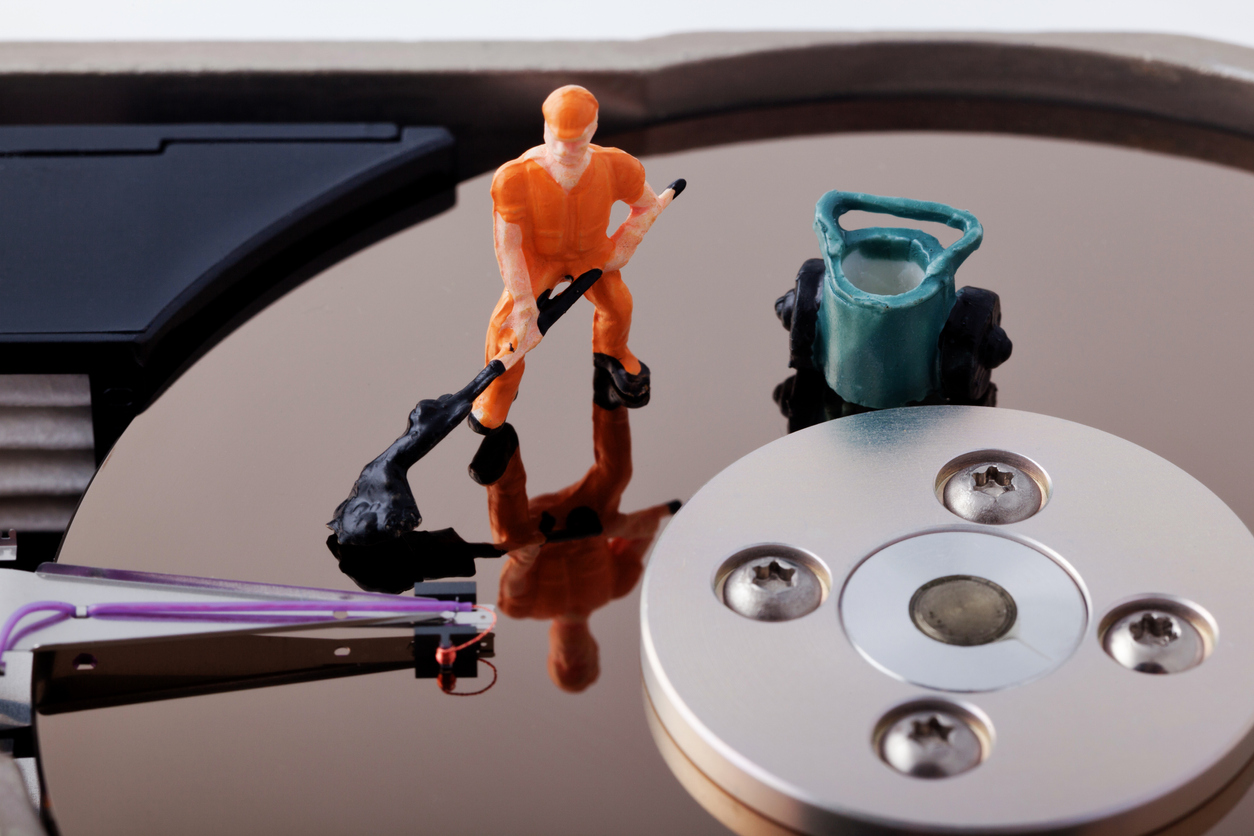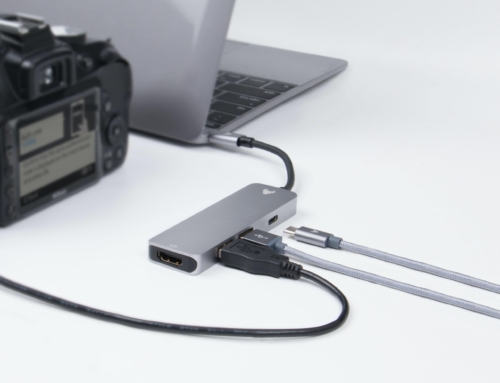Why does it seem like, no matter how hard you try, your hard drive is always running out of space? If you’ve been running near full or recent large projects are overloading your resources, you probably need to clean up the data on your hard drive.
Using a computer builds up useless and often hidden data over time. Even if you don’t sign up for every internet cookie and download needless software, your computer can fill up.
Fortunately, you can clean and optimize your computer’s hard drive in a few steps ranging from easy to advanced. Many admins will say that cleaning their hard drive was one of the first steps to taking control of network systems. The better you understand your hard drive, the more your machines can do. Then, you can build that understanding with IT training courses at Woz U.
Try these steps to tidy up your computer’s hard drive and regain that space.
1. Uninstall Apps You Don’t Use
Start by uninstalling every app that your computer doesn’t need. Most operating systems come with a suite, and normal use often involves the occasional download and testing out new programs. But now is the time to purge.
Navigate to your settings menu, and then to “Apps” or “Finder“ or “Add or Remove Programs” depending on your operating system. Here, you will find a list of everything your computer has registered as installed, and the option to remove it.
Know your essential programs, the programs you use regularly, and the programs used by anyone you share the computer with. Remove everything else. Remove unused games, tools, and platforms; anything that doesn’t belong with the internal uninstall process. This should clear up significant space on your hard drive.
2. Delete Old Files and Images
Next, comb through your user files and remove anything that you don’t need anymore. Saved receipts, memes, charts, reports, notes to yourself, and so on; delete anything you don’t want. If you choose to save it, organize the files into clearly labeled and tidy folders.
Challenge yourself to go through all the file locations where old files may be lurking. Remove anything you know is not needed. You should also skim for the names of programs you have uninstalled. Programs often leave data drops throughout your file system that are not fully cleaned up when the program is uninstalled. However, do not delete resource files for similarly named programs you kept, or are in the same developer family.
3. Find and Delete the Temp and App Data Folder Contents to Clean Up Your Hard Drive
Find and delete your Temp folder. This is a folder is where programs and web pages dump their quick-reference data like cookies, trackers, save flat files, and browser preference settings. The reason it’s temporary is that, if deleted, most programs will simply rebuild the files they need when you next log in. The Temp folder is also where many of the remaining files go after a program is uninstalled.
You can also seek out your App Data folder, which holds the installation data for many of your programs and games. If deleted programs still have folders in this file tree, remove them to save space.
Not sure where your Temp and App data folders are? This is part of the basics of IT administration you can learn at Woz U.
4. Use a Disk Cleanup Tool
What about files you can’t see? Disk cleaning programs like the tried-and-true CCleaner can rummage through your operational files, clearing out junk and flagging potential malware for removal. Disk cleaners can be used by beginners, but are the most effective when controlled and fine-tuned by an admin who understands their system and the disk cleaning software.
For even a beginner, however, disk cleaning software can win back a small to a significant amount of hidden and unused data. After a scan and cleaning, you may need to log back into your online and connected accounts because temporary files have been removed.
5. Get Rid of Lingering Malware
Malware comes in many shapes and sizes. Essentially it is a program designed to benefit the originator instead of the user. Malware can be spyware stealing your passwords, but it can also be a tracker that saves itself in an unusual and hard-to-clean place. Malware feeds off your computer resources and weighs down your hard drive without offering any value. You can sometimes spot signs of malware in unexplained processes in your Task Manager or in unusual errors with long, unreadable file names. Virus scanning software can seek out these anomalies in your operating system files and remove anything that is not built the way it’s supposed to be.
Virus scanning is essential for any modern computer user. A virus scanner and removal tool is often included in disk cleaning software.
6. Clear Personal Files to the Cloud
Next, free up even more space by moving your files to the cloud. Personal files are the combination of active-use folders and long-term data storage that exists for all modern people. Moving your work and project folders to the cloud can help you access them from anywhere, and creates a disaster-proof backup of everything you’re currently working on – including work projects and game saves.
You can also archive your long-term storage to the cloud for safe keeping and clear it from your hard drive for more effective daily operations. Most people have an archive of photos, conversations, projects, journal entries, and other personal files that they keep very carefully on their local computers and storage. Why carry around a few extra GB of photo albums when the cloud can store them more safely? Now is the time to upload it to the cloud. You can still keep your most personal archives on a thumb drive in your watch box, but the cloud allows you to create a disaster-proof digital backup of your files.
7. Start Making Cloud Backups
Once your computer is cleaned up of all unused programs, files, and hidden trackers, take a snapshot. Now is a good time for a cloud backup, and to start the habit of keeping cloud backups of your most important files and current installation. Regular backups are an important routine for work computers and operational servers, while occasional backups are sufficient for personal computers and devices.
Start taking a backup before any major installation or update if you want to create a restore point. Store your backups on the cloud for space, and easy retrieval from any location or device.
8. Optimize Your Hard Drive for Performance
Finally, you can achieve the greatest space and performance from your hard drive through optimization. Professional admins who learn at Woz U can easily determine the right optimization steps for each computer build and operating system.
For example, you want to regularly defragment a mechanical disk hard drive, but rarely defrag a solid-state disk drive and flash memory devices. With an advanced understanding of your hard drive, you can make the best use of your hardware, firmware, and software resources.
Tidy Up Your Computer’s Hard Drive Today!
Want to become more versed in tech? Woz U is here to help with the training needed to begin that journey. When you’re ready to begin the journey and new career, Woz U is here to help you get started. With many different options, you can start your journey to a career in tech now!





